Chinese manufacturer Sivga wanders into a crowded market and manages to find undisturbed territory.
Until recently, my only experience with Chinese audio manufacturer Sivga was with their P-II model – a near-identical clone (with some differences) of the legendary Sendy Aiva.
While I was not incredibly impressed by the Aiva, I admit that mid-fi planar sound is generally not for me. Yet, that model certainly made an indelible impression on many headphone enthusiasts. I remember some folks remarking that they could rival USD$1,000 models in terms of sound and value.
So when given the opportunity to review the new Luan, I jumped at the chance to see what Sivga was up to. After all, this is a manufacturer who can produce a market-disrupting product.
- Clean, clear sound without obvious distortion
- Unfatiguing midrange and treble while retaining a sense of detail
- Overall realistic instrumental timbre
- Good build quality with premium materials
- Very easy to drive
- Lack of bass quantity and quality
- Restricted dynamic ability and sense of engagement
- Can sound too smooth
The Luan are their entrant to the mid-fi open-back dynamic-driver market, priced between USD $300-$400. The challenge of creating a viable competitor in this area is a steep one. This market has been ruled for many years by the trifecta of the Sennheiser HD600, AKG K701, and Beyerdynamic DT880 (as well as other similar products from those manufacturers).
Will the Sivga Luan land themselves among the top tier of the mid-fi bracket? Or is Sivga aiming for a currently non-existent niche with the Luan? These were the questions on my mind as I headed into this review.
Company Overview
Sivga Audio is part of a mysterious collective of headphone manufacturers, including, at least, Sendy Audio. These companies work together to create many products that have been praised for their value and sound quality.
My impression of Sivga is that their design philosophy is similar to the “luxury-car” school: plenty of sensibly-applied wood, leather (faux, in some cases), and metal predominate.
Sonically, their products go for clear, neutral sound signatures that err on the bright side of neutral, but only very slightly.
Overall, this is a no-nonsense approach: these products should, if executed well, “tick all the boxes” for being usable in multiple different situations, whether a user prioritizes sound, aesthetics, convenience, or all three.
Technical Specifications
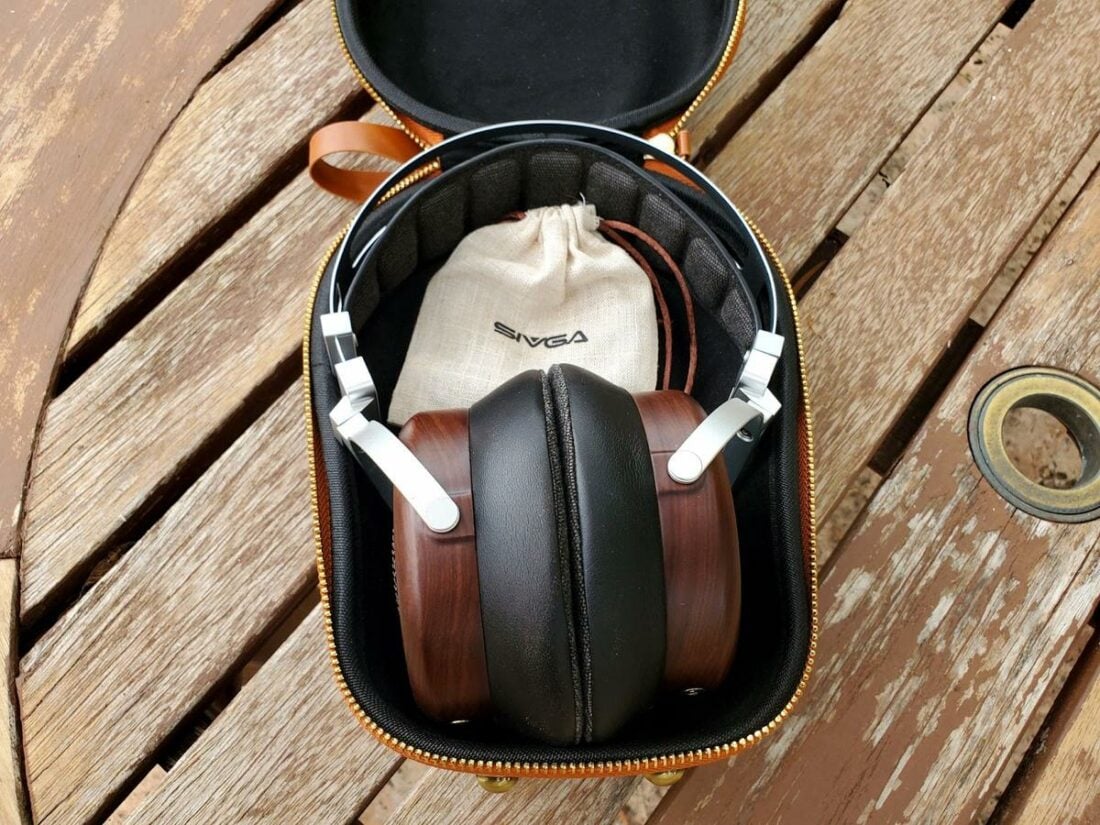
- Form: Over-ear, open-back
- Driver: Dynamic
- Impedance: 38 Ohm
- Sensitivity: 100 dB
- Frequency Response: 20 Hz – 40 KHz
- Connector Plug: 3.5mm two-pole
- Source Plug: 3.5mm
Build
Relative to their competitors, the Sivga Luan are characterized by the use of highly premium materials. The earcups are wood. The headband is metal. The earpads are made of velvet (and pleather). The cable attaches to the headphones with a gold 2-pole 3.5mm connector.
For those who hate the sight of plastic, the Luan are ideal. I don’t care much about materials, and I’m not particularly drawn to the design. But that’s OK – what you see is what you get, and users can make their own judgments. They are well crafted and there are no parts that feel misaligned.
Regardless of my personal feelings about the design, the build quality of the Luan is excellent.
Still, Sivga should be praised for its tight manufacturing tolerances, assuming the unit I received is a production model.
Comfort
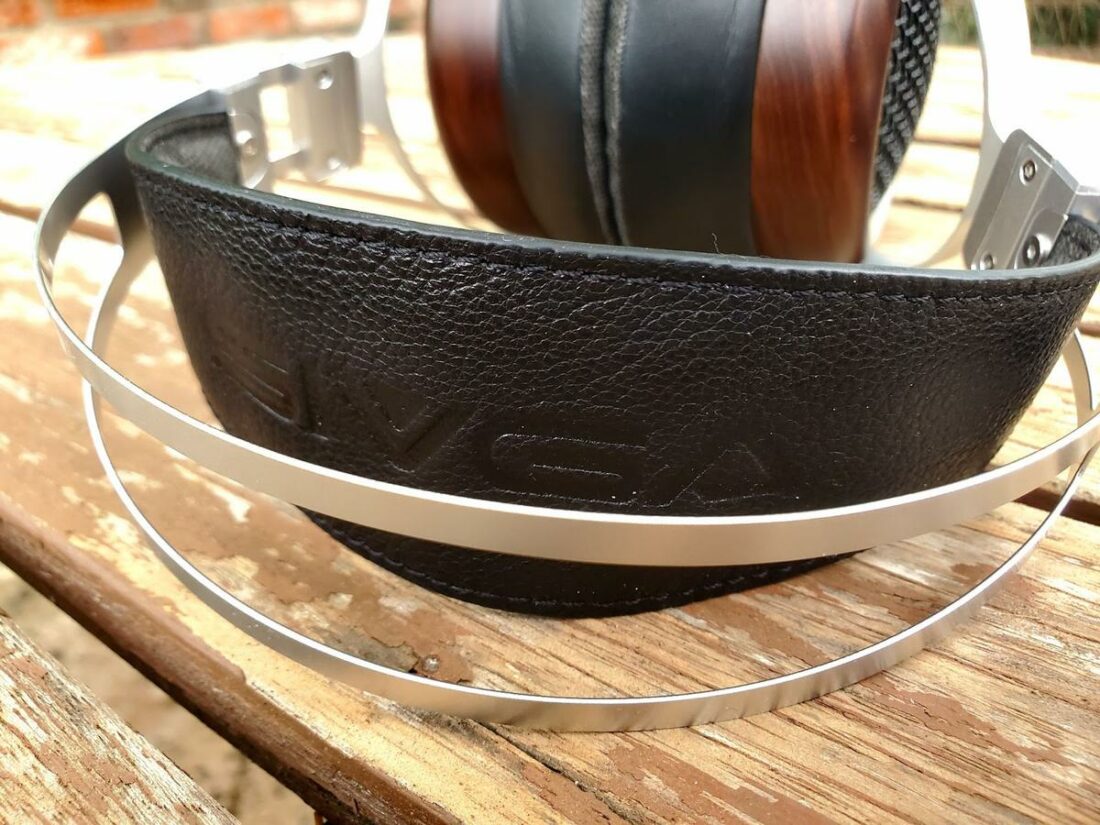
Sivga opts for a design that splits the difference between portability and comfort. The Luan are a small pair of headphones compared to most open-back models, and as a result, they’re easy to bring to work or wherever. I mostly used them in the office (hopefully not to the chagrin of the person I share a room with).
In accordance with their small size, they’re pretty light, and their clamping force is ideal for keeping them in place without putting too much pressure on your noggin.
The earpads are conical, allowing them to fit multiple ear types while maintaining a small earcup footprint. It’s an ingenious design, and I’m surprised we don’t see more of it. I can imagine that people with very large ears might still find the earpads a bit restrictive, though.
Finally, the head-strap on the suspension headband (suspension is the way to go, IMO, BTW) is soft enough to prevent hotspots.
Overall, the Luan get full marks in terms of comfort for me.
Accessories
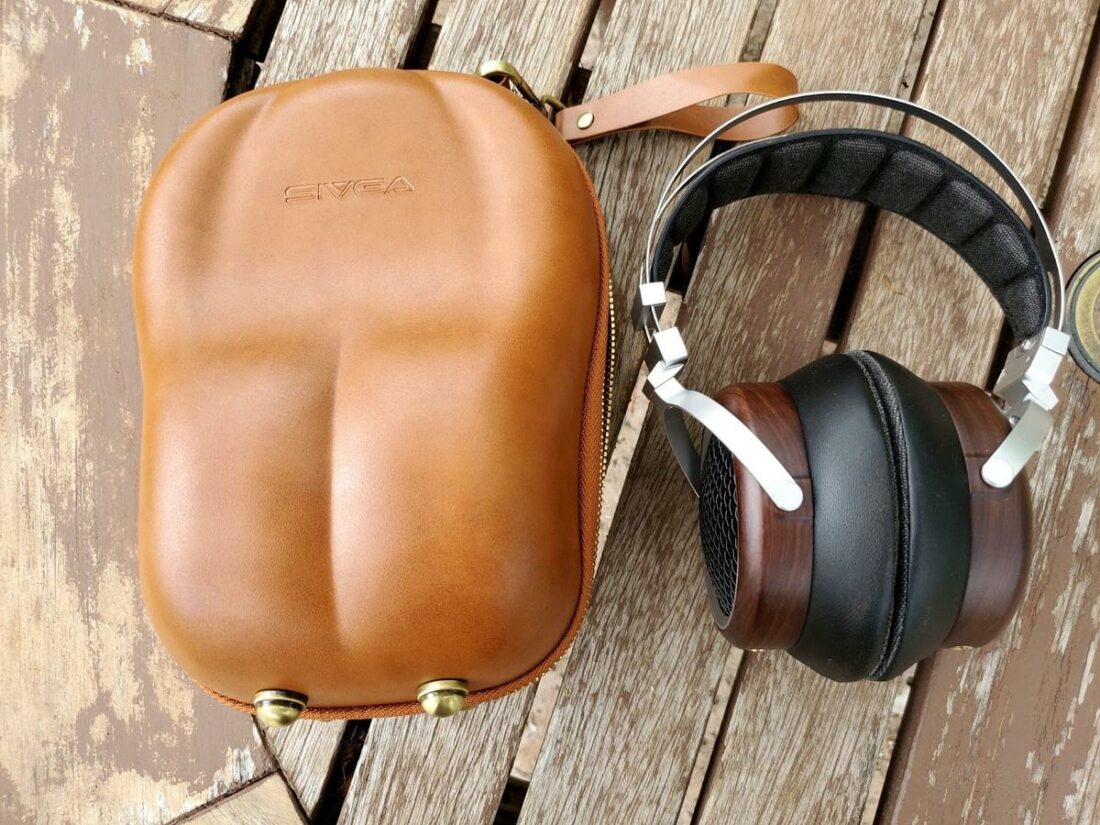
The included cable is the only part where Sivga skimped slightly in terms of materials. While the connectors are made out of precisely-machined metal, the cable is wrapped in a grippy rubber that retains its shape too readily, meaning it can quickly become full of kinks.
The case fits the headphones well and can easily be attached to a backpack or handbag with the included straps. However, many who saw the case compared the appearance to a human behind. No further comment is necessary.
Sivga Luan Sound
While the press release uses the usual hype-focused descriptors to characterize the sound of the Sivga Luan – “deep” bass, “rich” mids, “smooth” treble – the actual sound of the Luan is respectably no-nonsense.
In practice, the Luan resist almost all romanticization. For the record, that’s a good thing.
These headphones are quite neutral even though they don’t have a perfectly flat frequency response.
At the same time, I am hard-pressed to point out anything these headphones do outstandingly well. I’d describe them as a “summary” of what’s possible at their price point rather than an outstanding advancement.
Technicalities and staging
Overall, technicalities are mixed. It seems like detail resolution and imaging were prioritized over dynamic ability. As a result, I found detail and imaging a step or two above average, while dynamic contrast is a step behind.
Regarding dynamics, the Luan are not “dead-sounding” the way certain headphones from, say, Dan Clark Audio are; instead, they’re light sounding and airy. Those who have experienced mid-fi AKG headphones like the K712 may know what I’m talking about.
They don’t sound unnatural, but they place some distance between the listener and the music.
As a result, those hankering for a pulse-pounding listening experience will almost certainly want to explore other pastures.
The Luans’ real strength is in their sense of clarity, composition, and smoothness. Although they aren’t entirely grain-free, one must crank the volume significantly to notice any disturbing sense of grain.
The Luan are neither outstanding nor poor in their resolving ability. Their ability to scale to a high-quality amplifier is not incredible. When fed a surplus of power (for example, with the Schiit Jotunheim 2), they lose to the Sennheiser HD600 in their sonic definition and ability to display the finest details of a recording.
The real benefit comes with less capable setups. The Luan can easily be powered by a computer motherboard, supplying effortless resolution while other mid-fi dynamic headphones struggle.
While they don’t scale as much, they have a higher baseline for good performance.
The soundstage is neither cramped nor overly diffuse. It’s relatively realistically proportioned, with good but not outstanding imaging. There is an adequate sense of “spaciousness” in the sound.
Bass
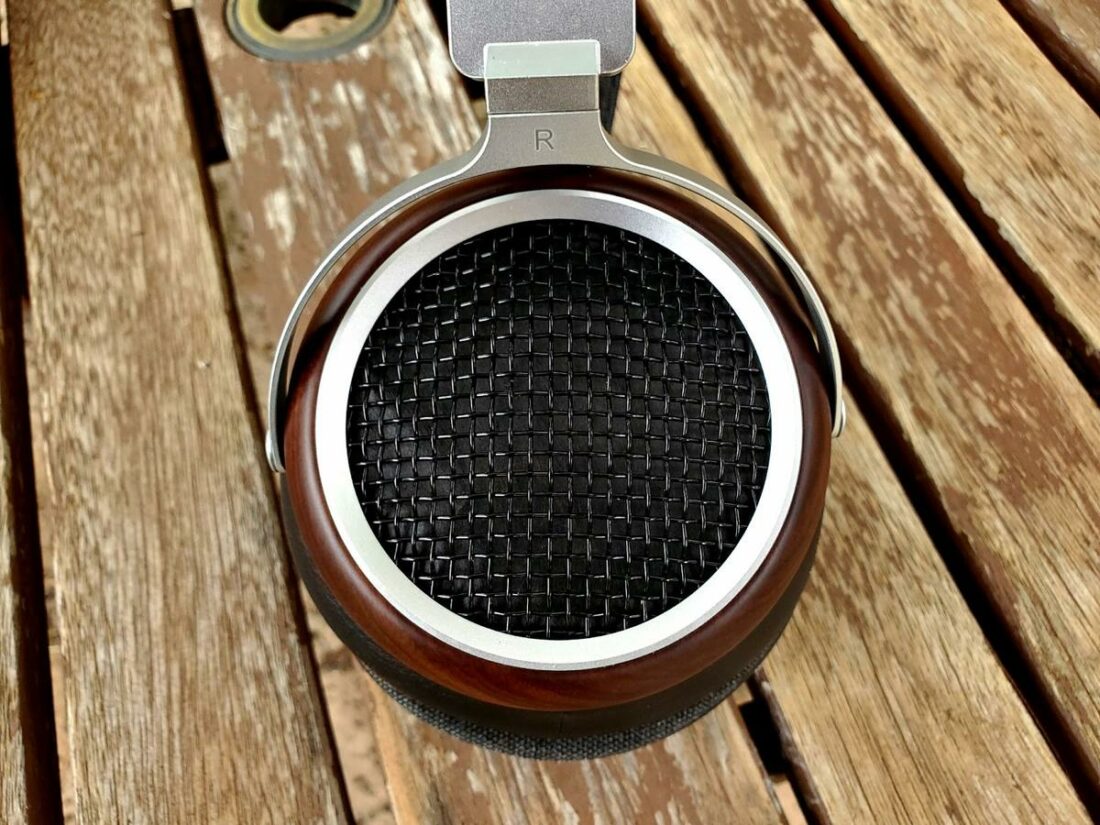
Now it’s time for the bad news: the Sivga Luan do not offer much in the way of bass performance. Sure, they make up for this deficit in other areas, but the bottom line is these headphones roll off at around 100 Hz, making them unsuitable for bassheads.
Bass roll-off is more severe with the Luan than their competitors – they miss the mark here.
Unfortunately, the bass doesn’t respond particularly well to EQ, becoming bloated and poorly defined. I can see why the engineers behind the Luan chose to let the bass take a backseat.
Midrange
For the midrange tuning, Sivga have adopted a classic approach that has served many companies well.
The overall sound of the midrange is neutral: neither too warm nor too cold, with neither the upper midrange nor the lower midrange predominating in the mix.
The one area where the Luan deviate from a flat frequency response is in the region from 1-2kHz. Those who have experience with Hifiman headphones know this type of midrange tuning well, as most Hifiman headphones share it.
This tuning choice results in a spacious, laid-back midrange tone that retains realism and neutrality.
While the tuning might resemble that of classic Hifiman headphones, I give the Luan the edge in realism within this price bracket, as the dynamic drivers present a more realistic sense of decay and timbre.
I can imagine many people liking this tuning. I prefer the more aggressive and engaging tuning of headphones like the HD600 and the K712. These headphones can also better render the “raw edge” of sound without smoothing things over.
But it’s all a matter of taste – those who desire “spaciousness” and “clarity” at the expense of “engagement” will love the Luans’ midrange.
Treble
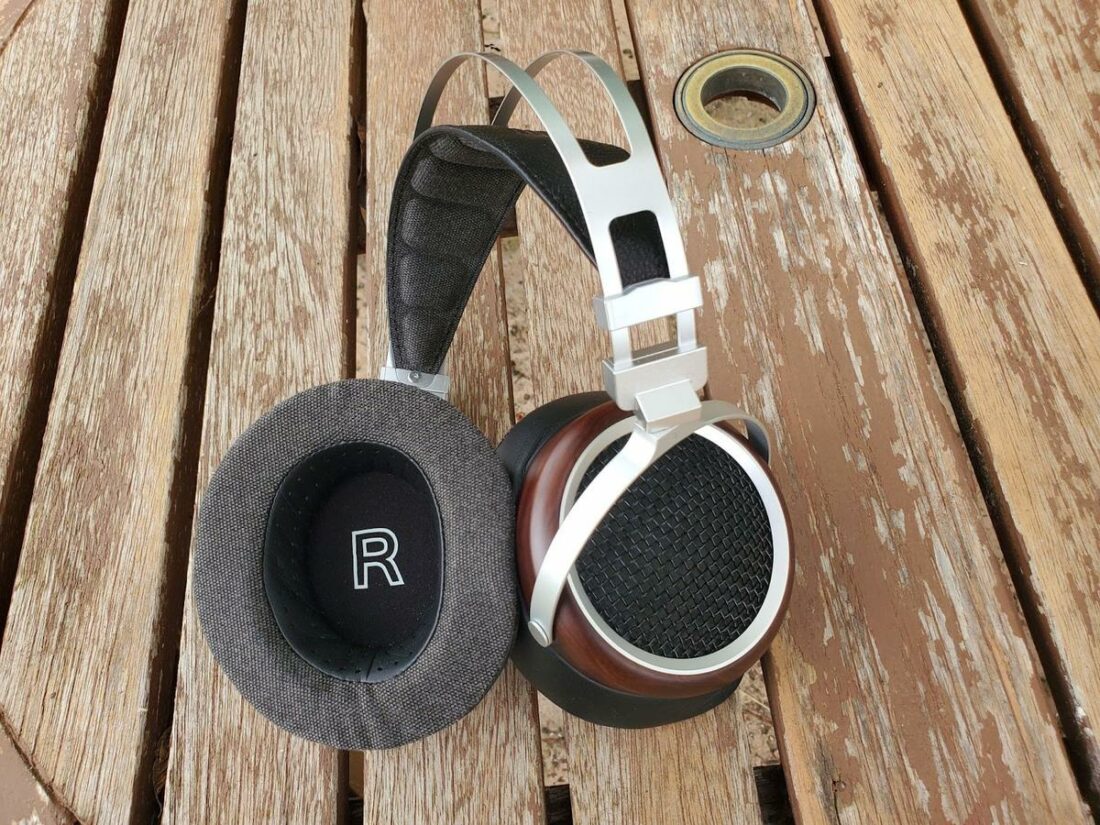
The Luan may have the best and most neutral treble response of all the current members of the mid-fi stable. However, these headphones won’t wow anyone with treble resolution and extension that punches far above their price range or anything like that. The treble response is overall “normal.”
But, while the AKG and Beyerdynamic headphones have major peaks that can make them difficult to listen to, and the Sennheiser headphones suffer from grain, the Luan are more even-keeled.
Timbrally, the Luan are remarkably free from any aberrations. Some slight haze, maybe. This is more than forgivable given the asking price since Sivga would charge much more if they were free of all issues.
Overall, I prefer the timbre of the Luans’ treble to most headphones at this price range. Their treble is not grainy, hashy, metallic, or plasticky.
Bottom line: the Luan do treble very well.
Where to Buy
Conclusion
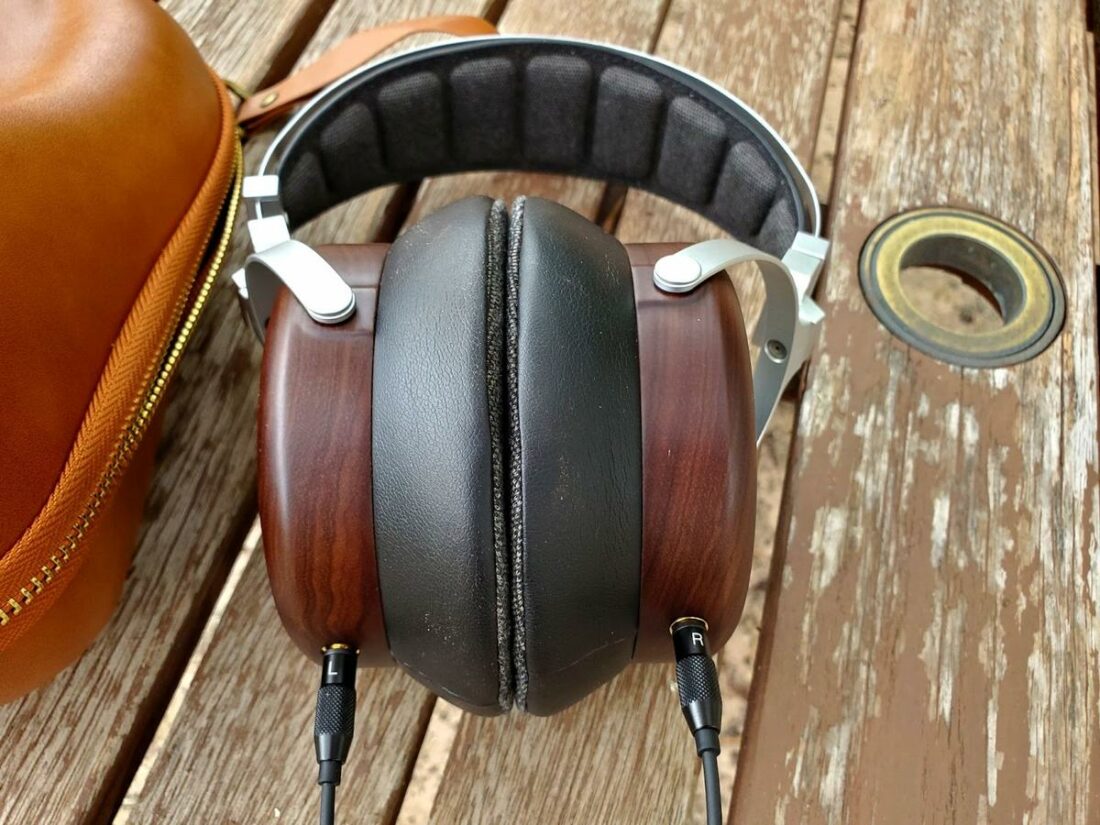
The Sivga Luan are portable, easy to power, and well-built. They have nice midrange and treble timbre – very “clean” and “clear” without prominent grain or tonal aberrations. These qualities alone ought to make them very popular among headphone enthusiasts.
They’re a great pair of starter headphones for those first getting into mid-fi, especially because they don’t demand a high-powered rig for casual listening and can easily be driven by a phone or computer motherboard.
However, they have flaws, such as bass roll-off at 100 Hz (pretty unusual even for this price bracket) and lack of dynamic contrast.
Whether the trade-off is worth it depends on you. All mid-fi headphones have issues. In my opinion, the Luans’ positive qualities outweigh the negatives sufficiently to place them in a good position within the market.
I recommend the Luan to those prioritizing clarity, spaciousness, and good timbre over dynamics, bass, and engagement.

hey how are you, in a comparison with the sendy apollo which do you think is better? all the best
Hey Godslayer, author here. Although I haven’t heard the Apollo, from reading reviews I can tell you the two will be very different. The Apollo is a bassy, warm, and V-shaped headphone that is highly colored, meaning the music you listen to will have more power and volume in the low-end and the lower-midrange. The Sivga Luan, on the other hand, has very little bass but a more neutrally-tuned midrange and a larger soundstage. So I would say if you like bass go for the Apollo, if you like clarity go for the Luan.
Sorry I’m a little late, but hope that helped!
Do you think these or the zeus elite would be better for competitive gaming like being able to hear where a shot in the distance was or who is behind me around a corner running
I would definitely recommend these over the Zeus Elite for gaming.